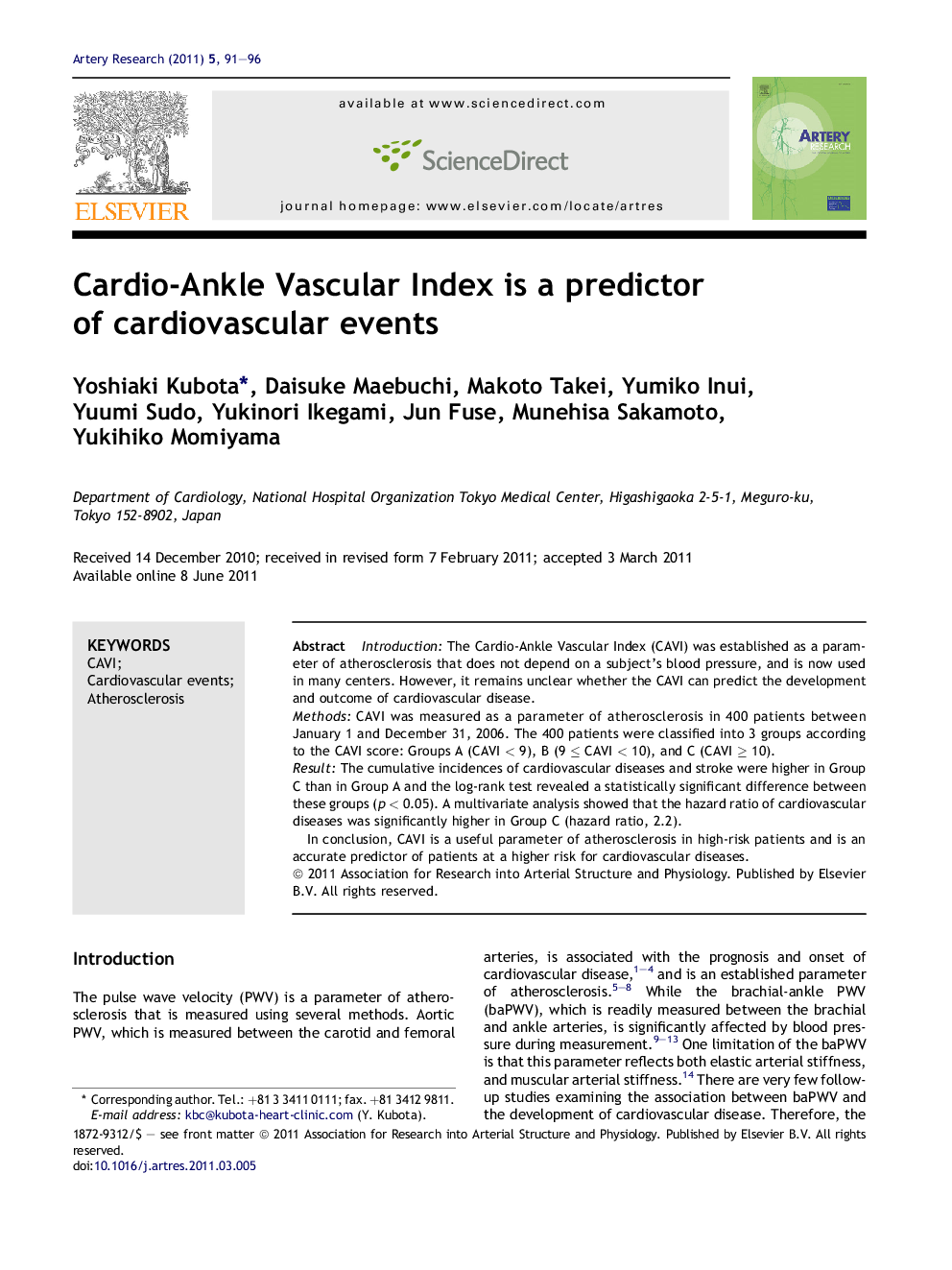| Article ID | Journal | Published Year | Pages | File Type |
|---|---|---|---|---|
| 2891721 | Artery Research | 2011 | 6 Pages |
IntroductionThe Cardio-Ankle Vascular Index (CAVI) was established as a parameter of atherosclerosis that does not depend on a subject’s blood pressure, and is now used in many centers. However, it remains unclear whether the CAVI can predict the development and outcome of cardiovascular disease.MethodsCAVI was measured as a parameter of atherosclerosis in 400 patients between January 1 and December 31, 2006. The 400 patients were classified into 3 groups according to the CAVI score: Groups A (CAVI < 9), B (9 ≤ CAVI < 10), and C (CAVI ≥ 10).ResultThe cumulative incidences of cardiovascular diseases and stroke were higher in Group C than in Group A and the log-rank test revealed a statistically significant difference between these groups (p < 0.05). A multivariate analysis showed that the hazard ratio of cardiovascular diseases was significantly higher in Group C (hazard ratio, 2.2).In conclusion, CAVI is a useful parameter of atherosclerosis in high-risk patients and is an accurate predictor of patients at a higher risk for cardiovascular diseases.
